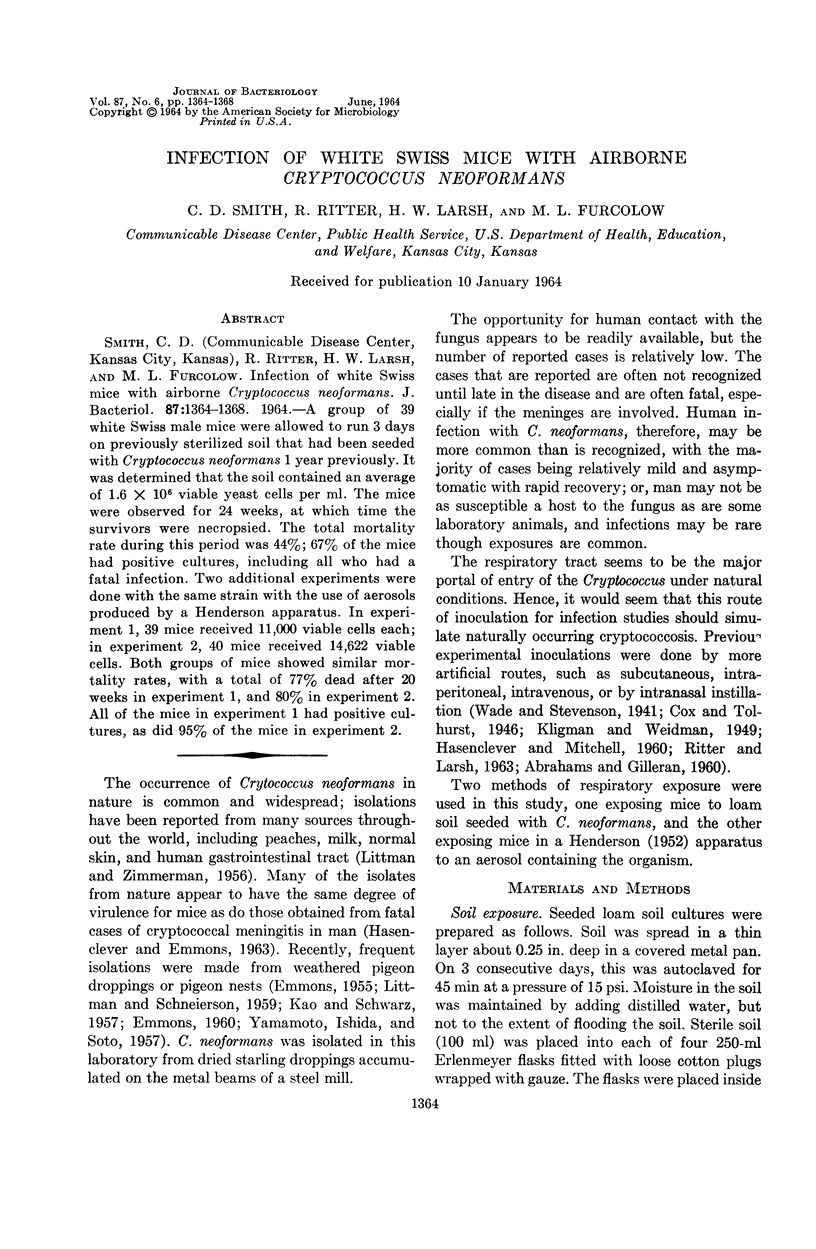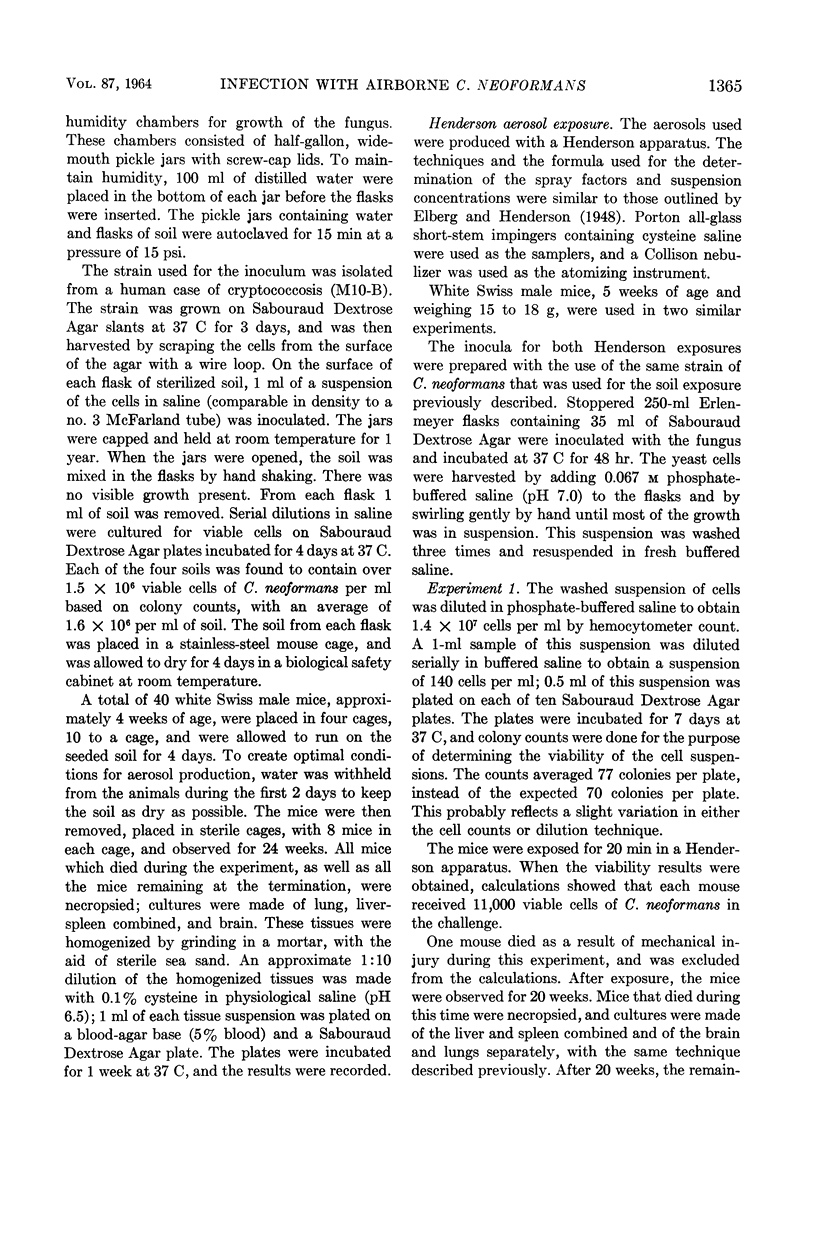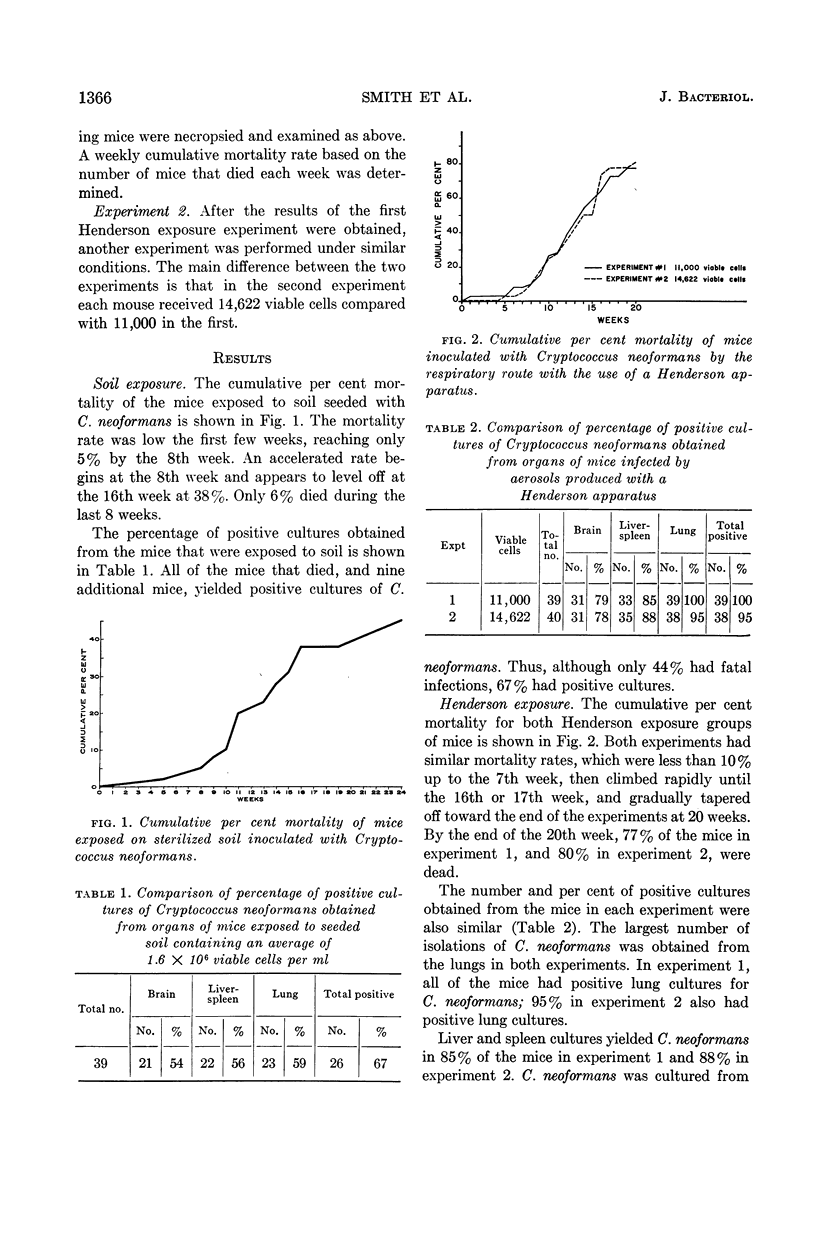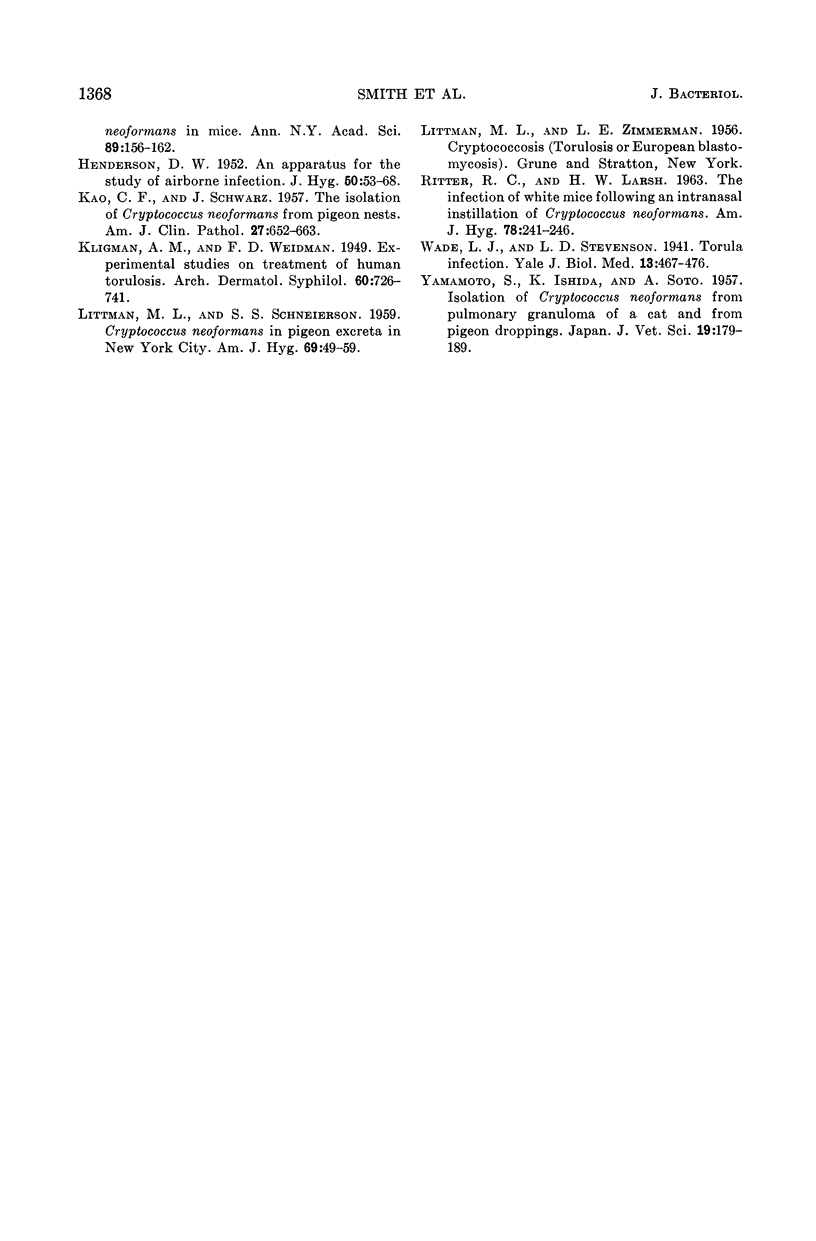Abstract
Smith, C. D. (Communicable Disease Center, Kansas City, Kansas), R. Ritter, H. W. Larsh, and M. L. Furcolow. Infection of white Swiss mice with airborne Cryptococcus neoformans. J. Bacteriol. 87:1364–1368. 1964.—A group of 39 white Swiss male mice were allowed to run 3 days on previously sterilized soil that had been seeded with Cryptococcus neoformans 1 year previously. It was determined that the soil contained an average of 1.6 × 106 viable yeast cells per ml. The mice were observed for 24 weeks, at which time the survivors were necropsied. The total mortality rate during this period was 44%; 67% of the mice had positive cultures, including all who had a fatal infection. Two additional experiments were done with the same strain with the use of aerosols produced by a Henderson apparatus. In experiment 1, 39 mice received 11,000 viable cells each; in experiment 2, 40 mice received 14,622 viable cells. Both groups of mice showed similar mortality rates, with a total of 77% dead after 20 weeks in experiment 1, and 80% in experiment 2. All of the mice in experiment 1 had positive cultures, as did 95% of the mice in experiment 2.
Full text
PDF




Selected References
These references are in PubMed. This may not be the complete list of references from this article.
- EMMONS C. W. Prevalence of Cryptococcus neoformans in pigeon habitats. Public Health Rep. 1960 Apr;75:362–364. [PMC free article] [PubMed] [Google Scholar]
- EMMONS C. W. Saprophytic sources of Cryptococcus neoformans associated with the pigeon (Columba livia). Am J Hyg. 1955 Nov;62(3):227–232. doi: 10.1093/oxfordjournals.aje.a119775. [DOI] [PubMed] [Google Scholar]
- HASENCLEVER H. F., EMMONS C. W. THE PREVALENCE AND MOUSE VIRULENCE OF CRYPTOCOCCUS NEOFORMANS STRAINS ISOLATED FROM URBAN AREAS. Am J Hyg. 1963 Sep;78:227–231. doi: 10.1093/oxfordjournals.aje.a120340. [DOI] [PubMed] [Google Scholar]
- HENDERSON D. W. An apparatus for the study of airborne infection. J Hyg (Lond) 1952 Mar;50(1):53–68. doi: 10.1017/s0022172400019422. [DOI] [PMC free article] [PubMed] [Google Scholar]
- KAO C. J., SCHWARZ J. The isolation of Cryptococcus neoformans from pigeon nests; with remarks on the identification of virulent cryptococci. Am J Clin Pathol. 1957 Jun;27(6):652–663. doi: 10.1093/ajcp/27.6.652. [DOI] [PubMed] [Google Scholar]
- KLIGMAN A. M., WEIDMAN F. D. Experimental studies on treatment of human torulosis. Arch Derm Syphilol. 1949 Nov;60(5 Pt 1):726–741. doi: 10.1001/archderm.1949.01530050088008. [DOI] [PubMed] [Google Scholar]
- LITTMAN M. L., SCHNEIERSON S. S. Cryptococcus neoformans in pigeon excreta in New York City. Am J Hyg. 1959 Jan;69(1):49–59. doi: 10.1093/oxfordjournals.aje.a119980. [DOI] [PubMed] [Google Scholar]
- RITTER R. C., LARSH H. W. THE INFECTION OF WHITE MICE FOLLOWING AN INTRANASAL INSTILLATION OF CRYPTOCOCCUS NEOFORMANS. Am J Hyg. 1963 Sep;78:241–246. doi: 10.1093/oxfordjournals.aje.a120342. [DOI] [PubMed] [Google Scholar]


